If you liked reading this, feel free to click the ❤️ button on this post so more people can discover it on Substack 🙏
Welcome!
For those new here, Hedge Mystic is a reader-supported publication where I explore spiritual topics in parallel with seasonal wisdom and creative practice.
All of my articles are free to read, but you can send me a one-time donation if you like my work, book a tarot reading, or upgrade your subscription to support me long-term.
July, with its abundance of scorching sunlight, holds the feast day of Saint Mary Magdalene on the twenty-second of the month. This is the season of St. John the Baptist, which began on the summer solstice. John was a voice crying in the wilderness, a wild man who used the element of Water to initiate people in preparation for the baptism of Fire. These are profound mysteries, and I find it telling that they are remembered and celebrated in the month when the natural light from the sun is at its peak, a hint perhaps that the depth of these mysteries can only be glimpsed when spiritual light is at its most intense.
Mary Magdalene is a figure that draws our attention, fascinates, and compels us to look more deeply into the workings of the mysteries she witnessed and participated in. We don’t know much about her historically, and we want to know so much more! As is the case with such intriguing people whom we immediately recognize as extraordinary, but we know little about the irresistible urge to elaborate, expand, invent, and project takes over.
This has certainly been true for The Magdalene since the beginning. Because our urge to fill in the blanks is so strong and she is so compelling, we find her cast into many roles and serving as an icon of our imaginings. Mary Magdalene has been thought to be everything from a prostitute, priestess, feminist icon, possessed by seven demons, gnostic illuminati, the apostle to the apostles, a doctor of the Catholic Church, a mystic, a hermit in the south of France, the embodiment of the Holy Grail, the wife of Jesus and the mother of his child and the Black (or hidden) Madonna. Some of these things are true, and many are not. Yet all of them hold sway in our minds with power and fascination.
I’m not opposed to the expansion of expression that has grown up around Mary Magdalene and figures like her. However, it is essential to distinguish between what is historically and theologically true and what is intuited. However, exploring the edges of what could have been and the possibilities that are opened up with such musings has its place. It can sometimes reveal even deeper truths or give you a grasp of mysteries that would otherwise be too opaque to comprehend. Imagination, when rightly used, is a powerful tool.
Mary Magdalene and others who are part of our religious, spiritual, mythic, and epic stories always lend themselves (and perhaps they must) to merger with the psychological, cosmic, and archetypal if they are to be better understood.
We don’t have much factual info about Mary Magdalene, but as a prominent female presence in the Christian mythos, this allows her to become a cosmic container.
Magdala (or Migdal) in Hebrew means Tower", and was the name of a prosperous fishing village. In the 1st century, it wasn’t called Magdala or Migdal; it was called Taricheae, the Roman name, which comes from the Greek Tarichos, meaning "preserving by salting" and refers to a fish-tower in the city. Calling it Migdal or Magdala may have been an act of rebellion against the Romans on the part of the Jews.
Magdalene may be a title referencing The Tower. Titles and nicknames are important. Jesus renamed Simon as Petrus (Peter), which means Rock. This is an interesting, if speculative, pairing. Peter symbolizes the stability, solidity, and earthbound reality of physical life in which we live and act.
In contrast, Mary Magdalene symbolizes the Tower that rises upwards from the physical, lifting the mind to the heavenly realms and spiritual knowledge. This duo, comprising a prominent male disciple and a prominent female disciple, represents action in the earthly realm and the contemplative stillness that opens our being to spiritual truth, allowing our spirit to soar. It illustrates the two parts of spiritual life and practice.
Already, we’re trying to put puzzle pieces together to comprehend a fuller picture of Mary Magdalene and her role, which is important, possibly unique, and indeed necessary if we’re to discover the completeness of our relationship to the feminine or contemplative principle in spiritual matters.
I explore using active imagination (a technique from Carl Jung) and creative depth work process, using images as symbols to tell stories from within and explore mythic and esoteric ideas that already exist in our collective consciousness. Mary Magdalene fits into the second category and slips into the first as I create with potent images allowing juxtapositions and alignments to emerge intutitvely as I work.
Last year, I created an entire devotional book dedicated to exploring The Magdalene and her images, symbols, legends, and implications. In the first image above, a page from the book titled Essence, or The Essence of The Magdalene, three powerful figures are present, each offering commentary, connection, or explanation of Mary Magdalene’s essential nature.
On the far left, there’s an Egyptian figure. I am not certain that this is Isis in the original ancient work, although it does resemble her, with a chair or throne on her head, and she holds an ankh, a symbol associated with Isis. Whether the original is Isis or not is irrelevant in this type of work; she is a symbol, and in this work, she is a symbol of Isis for me. I chose her for several reasons. First, one of the primary stories of Isis is that she reassembles the body parts of Osiris after his death and mutilation at the hands of Set, his rival and evil brother, and she resurrects him. Here, I found a profound connection between Isis and Mary Magdalene, specifically in the context of resurrection. Mary Magdalene was the first to encounter the resurrected Christ after he was betrayed and suffered mutilation at the hands of evil. Isis is the divine agent of resurrection in the Egyptian myth. Though Mary Magdalene is not the cause of Christ’s resurrection, she is intimately involved in preparing his body for burial with spices, oil, and linen wrappings. I find it moving that the feminine principle is present and acts as the force that gathers the dead, prepares them, and stands guard, serving as a witness as resurrection takes place. There is a link, a necessity here. Natural life is born through a woman, and spiritual, resurrected life also comes into being when feminine archetypal energy is present and active.
To the right of Isis is Artemis/Diana, blowing her hunting horn, holding her bow and arrows, and accompanied by her hunting hound. Artemis/Diana is the quintessential virgin goddess. Young, athletic, powerful, decisive, independent, individual, singular. Mary Magdalene could be an overlay of such an archetypal figure. Mary Magdalene is never identified as the wife of, the widow, the daughter of, or the mother of, as was common custom in that day. She was wealthy with financial resources to share, and as far as we know, independent. She is an individual who was respected, esteemed, and perhaps even preferred. I see this as the feminine principle at its most essential. That principle's pattern and design may be suited to be all of the things I mentioned, but before all of those roles, as beautiful as they can be, the feminine principle is its own. In Mary Magdalene, we see that core being acknowledged, appreciated, and honored. We also see the particular way the feminine principle interacts with the spiritual and the divine. This is why my own relationship with Mary Magdalene is a sisterly one, with The Magdalene taking the role of an older, wiser sister, teaching and guiding me in spiritual matters.
Finally, on the right, we encounter the goddess Cybele, seated on a throne in a posture very similar to that of Mary Magdalene. Cybele may seem an odd choice to pair with Mary Magdalene if you know any of her stories. But again, in personal creative depth work, I can free associate images, symbols, archetypes, and systems in ways that no one else likely would.
Part of Cybele’s cult involves ecstatic music and dance; you’ll notice she‘s holding a drum. This instantly reminded me of Miriam, Moses’ sister, who was a prophetess and musician, leading women in sacred, ecstatic song, drumming, and dance. The English name "Mary," is a translation of the Hebrew "Myriam." The origins of Myriam are unclear, but several threads weave together in the name.
Myriam has the connotation of being pungent or bitter, used to describe tastes and smells, as well as difficult situations. It can also be connected to the idea of a marker or signpost, from a root meaning to be stiff or erect. Here, I’m thinking of her being called The Tower. The roots of the name Myriam also relate to myrrh, a bitter yet fragrant spice that was initially used to mark the tabernacle, but later came to be used to proclaim the consummation of marriage. Hence, despite its associations with words that primarily describe hardship, myrrh oil was known as the "oil of joy." Mary Magdalene, along with the other women in the Passion narrative, are sometimes called the myrrh-bearing women.
The verb mara, which possibly forms part of the name Myriam, means to be contentious or rebellious, particularly against God. The noun form means rebellion. This may refer to Mary Magdalene’s life before the seven demons were cast out from her. Interestingly, the verb mor, another possible linguistic connection, means to change. Perhaps the connection between the previous is coincidental, but maybe these words are indeed linked, as change is often a reaction to bitterness or opposition.
Then, of course, there is the image of Mary Magdalene herself, seated if not on a throne at least in a place of honor and esteem. You can always recognize her in classical art because she will be wearing red and holding a jar of anointing oil, often made of alabaster.
It is told in legend that Mary Magdalene and a few others escaped Jerusalem after the crucifixion and went to the south of France. After establishing churches and preaching salvation to the people, she retired to a secluded cave on a hill by Marseille, where she lived a life of prayer and contemplation. Her hair grew extraordinarily long and covered her when her clothing wore out. Seven times a day, angels took her to heaven and fed her the Eucharist.
This strange legend of Mary Magdalene covered in hair brings us full circle to the season, summer solstice or St. Johnstide, for it was none other than John the Baptist who we remember at this season who wore a shirt of camel hair.
So here we are back again in the here and now, exploring the season. Tell me your Mary Magdalene stories in the comments!
Summer blessings!
Are you moved by this piece and want the Hedge Mystic Community to benefit and grow? Then, make a one-time donation. Click the Donate button below!
Lean into the summer season with gusto and grace, allowing every good and perfect gift to lead you further along your soul’s path.
Thank you for reading Hedge Mystic and participating in this vibrant and growing community of creative, spiritual humans. You are always welcome here, appreciated, and loved.
Hedge Mystic is a reader-supported publication based on a value-for-value premise. If you find value in Hedge Mystic, support my work and consider becoming a paid subscriber. Your involvement and financial support are deeply appreciated. Thank you.




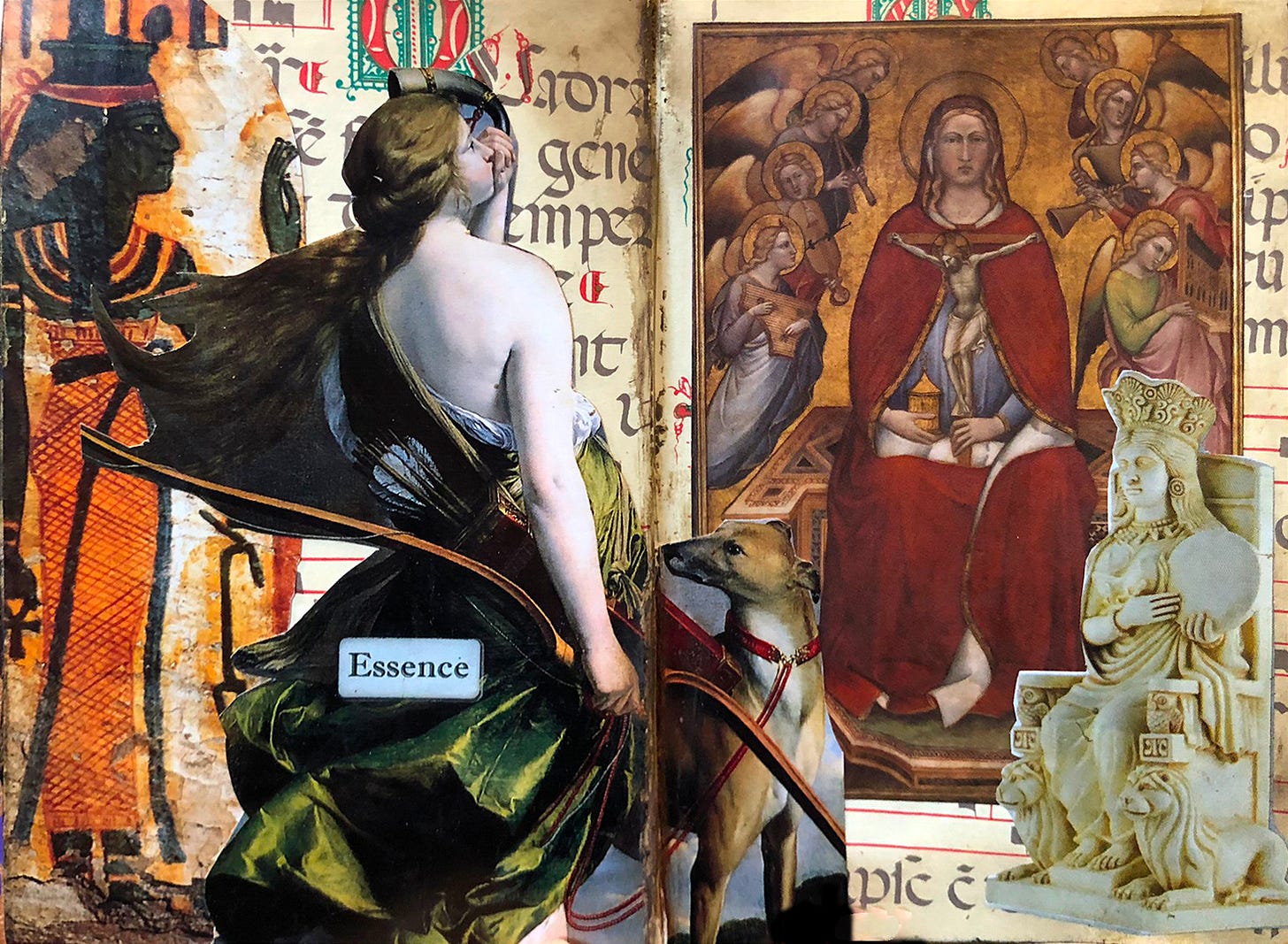
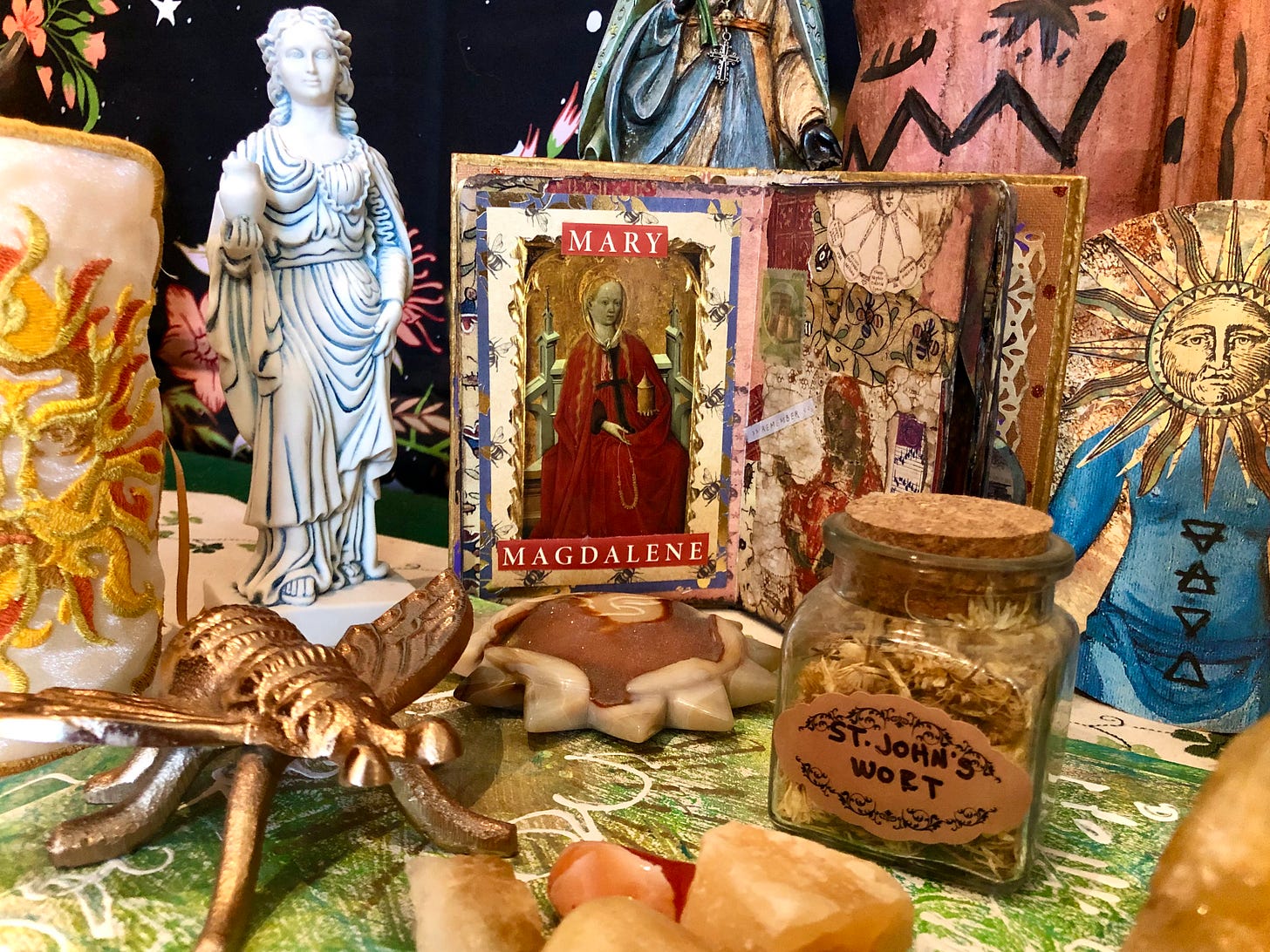

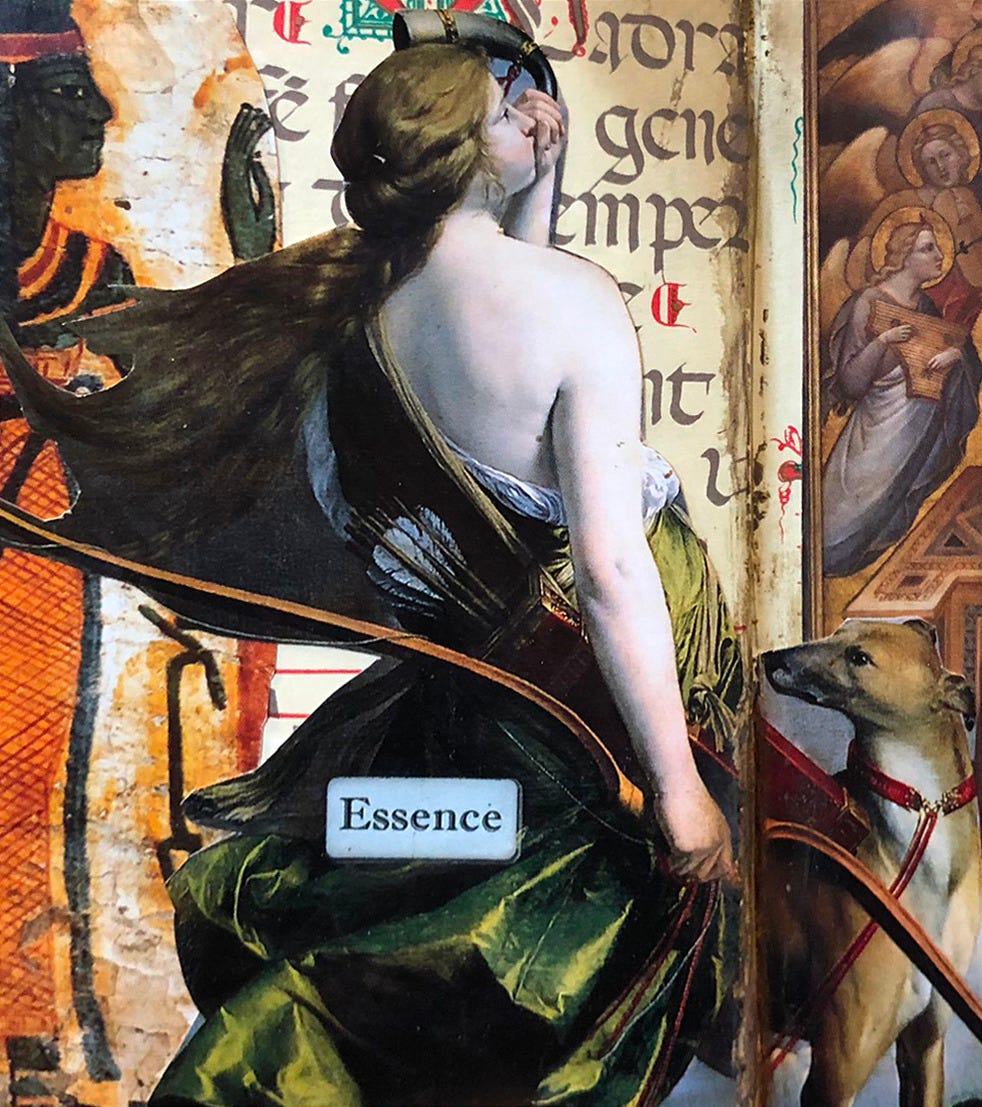
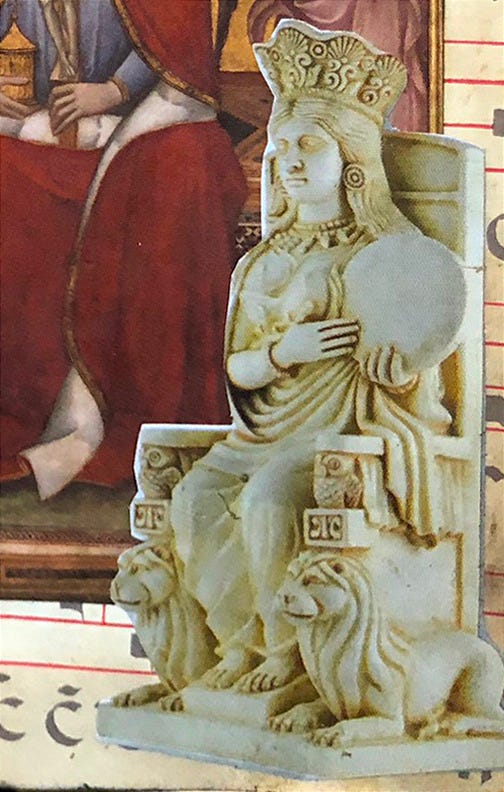
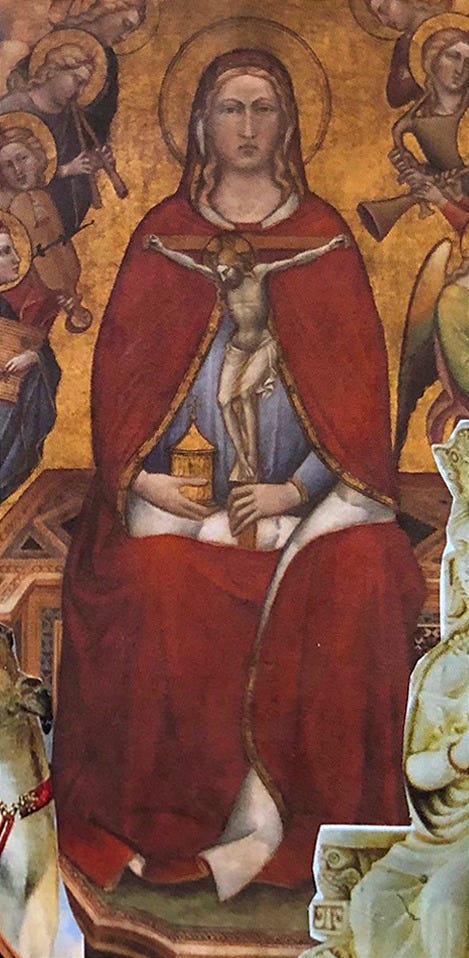

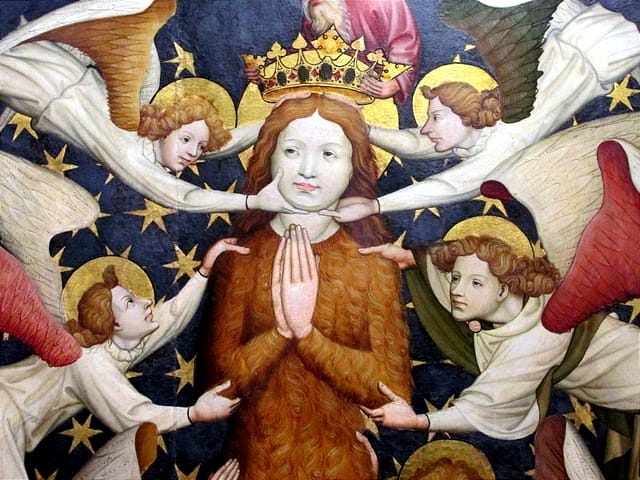

Thank you for this beautiful piece on MM. So rich and lovely. Savoring.....
What a beautiful artwork and insightful piece! I'd love to know more about your book! Eline